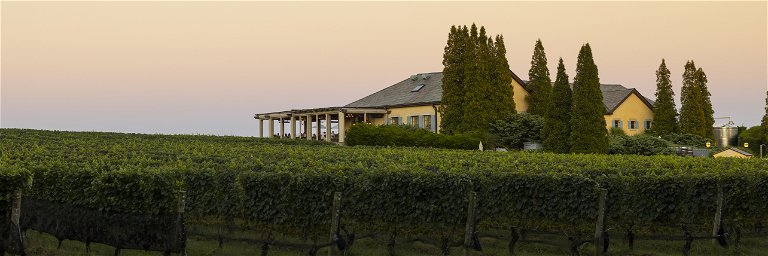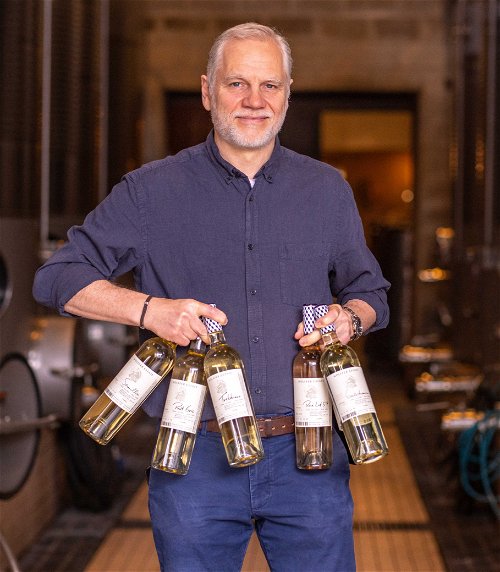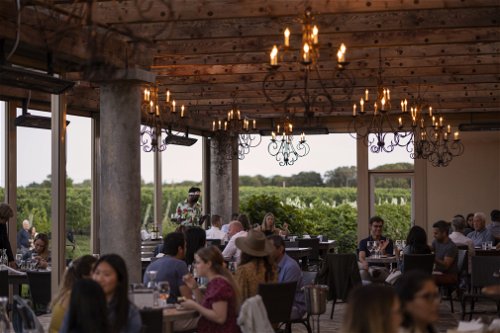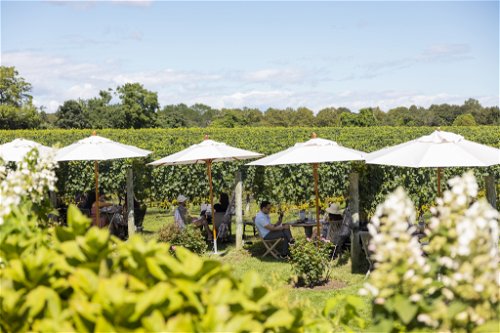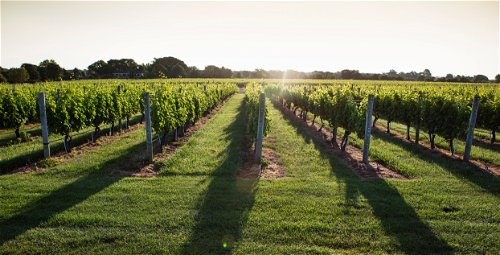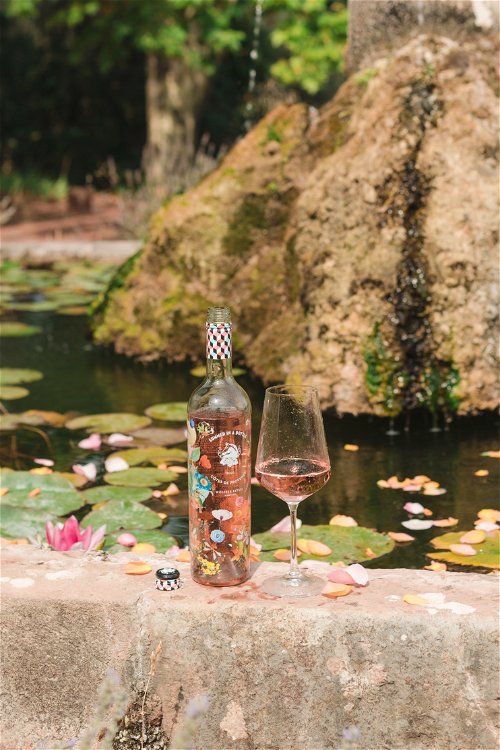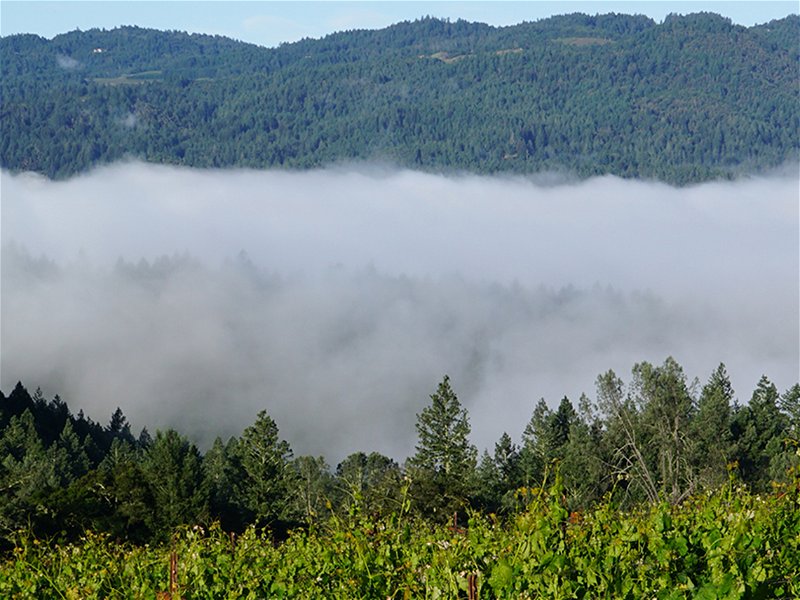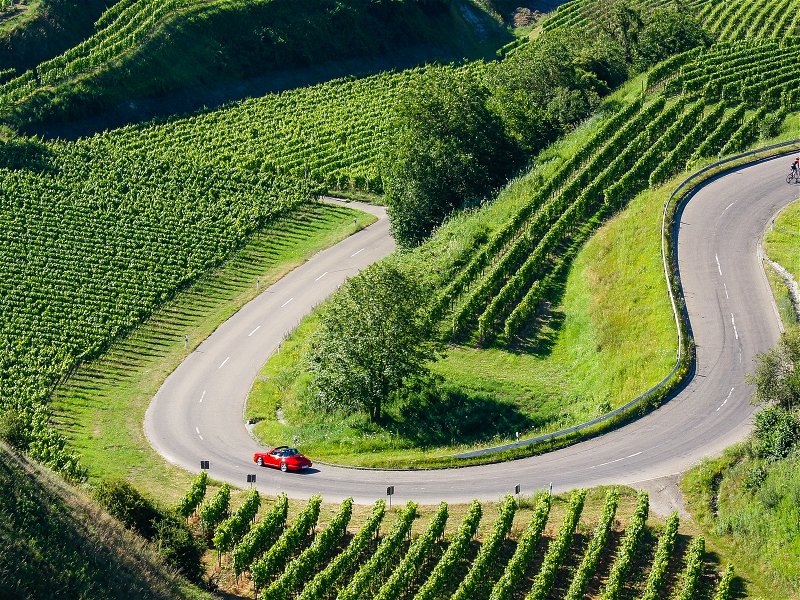How Wölffer Estate help drive America’s thirst for Rosé
On the estate’s 35th anniversary, winemaker Roman Roth reflects on the phenomenon.
With summer officially underway and rosé flowing freely, it’s hard to believe there was a time when pink wine wasn’t in fashion in the United States. But at Wölffer Estate on Long Island in New York State, rosé has long been in the winery’s DNA. The winery was one of the first to promote a dry rosé in the U.S. and played a large part in fueling rosé as a lifestyle wine. With the estate set to celebrate its 35th anniversary this year, Roman Roth, Wölffer’s winemaker and partner, reflects on the ascent of the pink wine in the U.S., and the estate’s role in its popularity.
A Rosé Empire
Wölffer Estate was founded in 1988 by Christian Wölffer, a German venture capitalist, and Roth joined as the winemaker in 1992. “I think there were only 12 wineries on Long Island at the time,” Roth recalls. “It was very exciting. There was a lot of great camaraderie, there was this spirit of being in a new region — there was just an electricity in the air.”
Unlike other estates, which settled in the North Fork, Wölffer established the winery in the Hamptons; even today, just a handful of wineries reside in this luxurious summer vacation destination. During his first year out east, the German-born Roth attended the Hamptons Classic, one of the area’s largest equestrian events, with his new boss. The setting sparked the idea to make a rosé, inspired by the dry wines of Provence that would suit the Hamptons lifestyle. Roth essentially made rosé at the very start of his tenure.
“At the time, everyone made sweet rosés and white Zinfandels, so people did a somersault backward in shock when they tasted dry rosé,” says Roth. Some hated it, but there was a contingency that was familiar with Provence rosés, and their positive response served as encouragement to keep moving forward.
In 2008, the estate launched its reserve-level rosé called Grandioso, which was aged in neutral oak barrels. As a rounder and richer—but still balanced—style, it showed the versatility of rosé as both a fresh and crisp aperitif wine, as well as a gastronomic one.
2012 saw the creation of Wölffer Rosé Cider, which married the growing trend of cider with pink wine. “The local joke is, anything I touch turns pink,” says Roth. The cider took off and today it’s one of the winery’s most popular products; they handpick 13 million apples and produce 100,000 cases annually.
But 2013 was truly a turning point when it came to Wölffer’s rosé. Building upon the blend that formed their original rosé, they crafted a cuvée using approximately eight different grape varieties and named it “Summer in a Bottle.” The catchy name, combined with the distinct and now-recognizable packaging became a runaway hit. In 2013 they made about 1,530 cases but nowadays produce anywhere from 55,000 to 60,000 cases, depending on the vintage. Grandioso remains in the portfolio, as well as other small-production bottlings. In addition, they produce 30,000 cases of rosé from Mendoza under the Finca label and 42,000 cases from rosé’s homeland, Provence. In total, they make 8 different rosés — a veritable rosé empire.
Rosé As a Lifestyle
It was in this period in the mid-2010s when rosé as a cultural phenomenon was in full flush. The Instagram account (and later, a wine brand) Yes Way, Rosé connected wine lovers and fueled the concept of rosé as a lifestyle beverage. The cringe-y “brosé” movement made men feel okay about drinking pink wine. Celebrities hawked it, and many even launched their own labels.
Although pop culture pushes like these helped moved rosé into the mainstream consciousness, the estate identified rosé’s inherent lifestyle quality as far back as its inception at the 1992 Hamptons Classic.
“Christian’s lifestyle was parties,” says Roth. “The parties were here, the people were here. It was a networking thing.” They showcased the allure of their wine in their own backyard and influenced the tastemakers that preceded today’s influencers. Plus, the wine paired with the abundant seafood of the area, and served as an easygoing companion to the pool or beach. Wölffer Rosé was a natural fit with its environment.
Wölffer gained support from some of Manhattan’s top restaurants as far back as the 1990s. French cuisine dominated the fine dining scene, so the chefs were familiar with the winery’s Provencal style of wine. Roth says these chefs “went to bat” for them by putting the rosé on the list, a move that not only elevated the concept of dry rosé as a serious wine but Long Island as a wine region in general. “The restaurants put the wine on despite what everybody else thought. So that made us a cool, a cool unique region,” says Roth.
A Quality Focus
Unlike many of the insipid rosés that flood the market today—a gimmick wine that a marketing person came up with, as Roth refers to them, he remains adamant that they focus on quality, another factor he attributes to the estate’s longevity. They use fruit from their top sites and invest in vineyard management the winemaking facility. With his German palate, Roth appreciates food-friendly wines with high acidity.
He believes their approach—authentic, terroir-driven rosé—will keep them at the forefront of the rosé category for years to come. “You want to feature the individual region,” he says. “We are very proud of capturing the Long Island sea breeze, as I call it. We don’t want to make cookie cutter rosé, where every vintage and every region tastes the same.”
